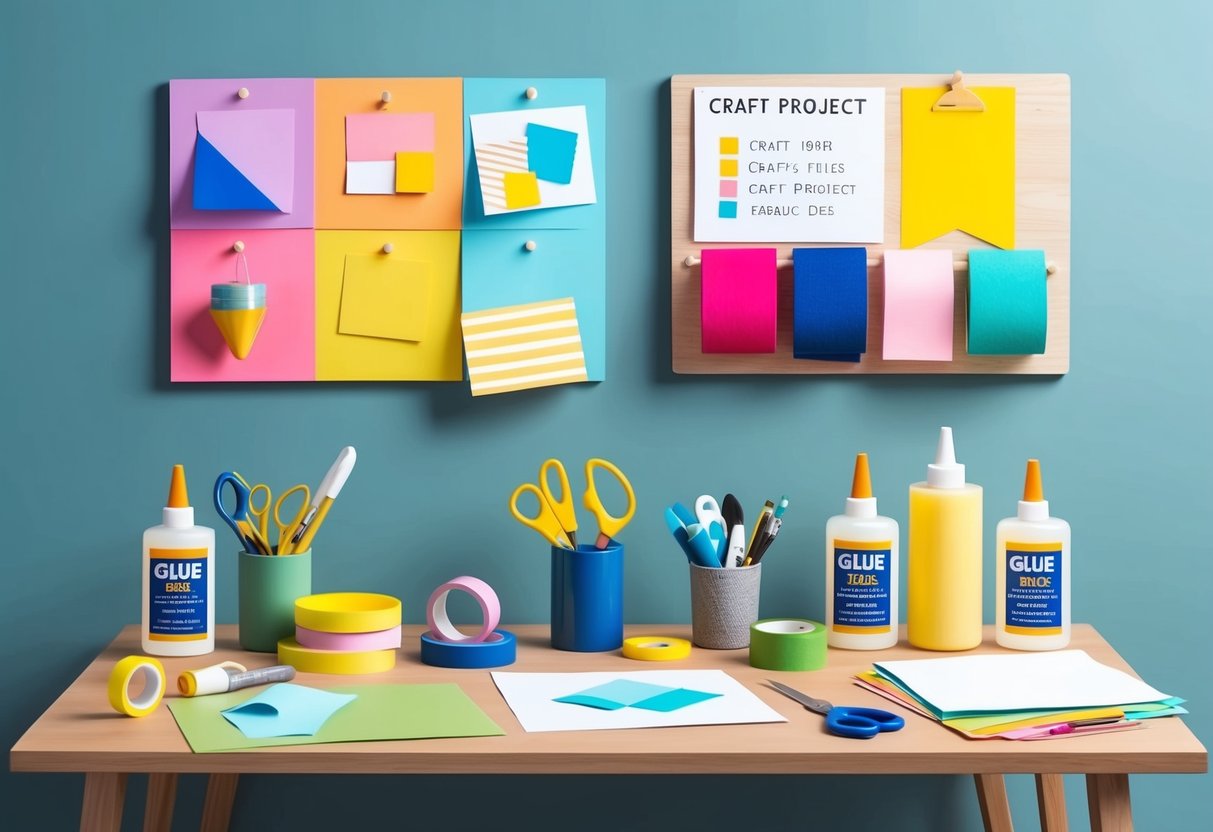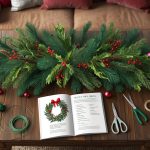
Fabrics
Fabrics require glues that maintain flexibility after drying. Fabric glues, fusible webbing adhesives, and tacky glues are ideal choices.
Fabric glue is formulated to penetrate fibers without hardening, maintaining softness for apparel or craft projects. It dries clear and resists washing, but it is not always suitable for stretchy materials.
Spray adhesive works well for large, thin fabric pieces but may not hold up to repeated laundering. When repairing or embellishing clothing, choose a dedicated fabric adhesive designed for machine washing to prevent the glue from breaking down over time.
When crafting with delicate or synthetic fabrics, test a small inconspicuous area to check how the adhesive affects color and texture. Some guides emphasize specialty adhesives for fabric to ensure the glue does not stain or stiffen the material.
Recommended options:
- Fabric glue: soft, washable, flexible
- Spray adhesive: best for large pieces
- Tacky glue: thicker, ideal for trims and appliqués
Wood Surfaces
Wood is porous, requiring adhesives that penetrate and create strong mechanical bonds. Wood glue (often polyvinyl acetate, or PVA) is the standard adhesive for carpentry and crafting due to its strength and ease of use.
It dries clear, can be sanded or painted, and works well for both softwoods and hardwoods. Carpenters’ glue, a type of PVA, is specifically engineered for wood-to-wood joints and provides high initial tack.
For joining dissimilar materials to wood, such as metal or plastic, epoxy is recommended for durability. When working with stained or finished wood, sand the area lightly before applying adhesive to ensure a reliable grip.
Comparison Table:
| Wood Material | Best Adhesive | Features |
|---|---|---|
| Unfinished, bare wood | PVA wood glue | Strong, dries clear, sandable |
| Furniture, cabinets | Carpenter’s glue | High tack, wood-specific |
| Dissimilar materials | Two-part epoxy | Durable, bonds different surfaces |
Expert glue guides discuss various options and recommend always clamping wood pieces until the adhesive cures fully for best results.
Drywall and Household Applications
Drywall, plaster, and general household repairs demand glues designed for porous and crumbly surfaces. Construction adhesives—available in both solvent-based and water-based formulas—are effective for bonding drywall panels, trim, and baseboards.
These adhesives fill gaps and provide a strong hold even in high-moisture environments. Household glues such as all-purpose PVA are suitable for lightweight decorations or craft projects, but construction adhesives are preferred for structural needs.
When repairing cracks or holes in drywall, use a patching compound first, then apply adhesive for added hold if attaching fixtures or hooks. In comprehensive adhesive guides, it is noted that choosing the appropriate formula reduces the risk of crumbling or bond failure over time.
Essentials:
- Use construction glue for securing drywall sheets and trim
- Choose PVA glue for light craft or decorative applications
- Apply adhesive to clean, dust-free areas for optimal strength
Adhesives for Specialized Craft Projects
Selecting the right adhesive is critical for achieving durability, appearance, and precision in specialized craft projects. Each material, from delicate paper to textured glitter, benefits from glues formulated for its unique requirements.
Scrapbooking
Scrapbooking requires adhesives that are acid-free and archival-safe to prevent yellowing or damaging photos over time. Double-sided tape and photo-safe glue sticks offer clean and precise adhesion for paper and small embellishments.
Liquid craft glues, designed for paper crafts, provide excellent tack without wrinkling or warping thin materials. Many scrapbookers use adhesive runners for a quick, mess-free application.
Foam dots or squares can add dimension when attaching decorative elements. Avoid standard school glue, as it can cause pages to buckle or become sticky.
For adding heavier items, such as fabric swatches or metal charms, specialized tacky glues deliver the strength and flexibility needed. Detailed guides can help determine which option is best for your project—see Dream a Little Bigger’s glue guide for specifics.
DIY Projects
DIY craft projects often mix various materials like wood, fabric, glass, and plastic. The best glue will depend on the surfaces being joined.
For woodworking or heavier assemblies, PVA wood glue forms a strong bond. Hot glue guns are popular for quick fixes and adhering non-porous materials, such as plastic or foam.
Multipurpose craft glues, like E6000 or super glue, provide industrial-strength adhesion for unconventional DIY applications. Set and cure times should be considered, especially for large or load-bearing constructions.
Silicone-based adhesives offer flexibility and strong hold for glass and metal pieces. Bearly Art and similar brands create versatile glues suitable for detailed DIY work.
For more project-specific advice, check out this ultimate guide to the best glue for DIY projects.
Glitter and Sequins
Applying glitter and sequins requires adhesives that dry clear and fast to prevent smudging or loss of sparkle. Tacky glue and fabric glue are commonly used, providing a firm grip without soaking through paper or cloth.
For wearable creations, fabric glue ensures sequins remain attached after washing and handling. Brush-on glues allow for even application, preventing clumping and preserving the shimmer effect.
Spray adhesives are useful for covering large surfaces evenly but should be applied in well-ventilated areas. When adding glitter to layered projects, craft glues with a precision tip improve control and minimize mess.
A guide to the different types of craft glue and their uses outlines which adhesive is best for glitter-heavy or sequin applications.



